Representation Of Common Man In Shailendra’s Lyrics
- Rubina Khan | rubinakhan17@gmail.com
Abstract:
Poetry and lyrics have always been in a debate for the difference they have. It’s easy to say a poem doesn’t have music but lyrics have music to enhance its artistic value. In Hindi Cinema many lyrics writers tried to break this literary difference between poem and lyrics. Poems are considered literary and songs are considered popular. Few lyrics writers considered using poems in the form of lyrics in a non-commercial way but with an intention or desire to present their words with direct meaning.
Hindi Cinema witnessed one such lyrics writer “Shailendra” who presented poems in a manner that appeared to be a literary article at the same time when used as songs got instantly popular. Previous studies have shown that a poem is a great tool to depict an individual’s life. This study was conducted on Shailendra’s poem to find out the Representation of the common man in Shailendra’s poem. A content analysis was performed on 05 of Shailendra’s lyrics. It was found Shailendra used simple everyday spoken Hindi language for his lyrics and he mostly wrote about the daily life of the common man. The simplicity in his writing, the depth of thoughts made the common man believe that the words are depicting his/her life. Similarly, the language used by Shailendra in his poem is often addressed as the language of a common man as it’s easy to understand and also depicts the social realities.
Introduction:
After India’s independence in 1947 till the late 1960’s India has witnessed major growth in its Cinema. It is a period in the history of Indian cinema which is regarded as the Golden Era of Indian Cinema. This is also one era in which a movie’s success or failure was not dependent on its storyline but was dependent on its music. It was observed that the popular the music, the greater the success movie gets. During this period the directors and actors played a major role in changing perception by making and acting in some very much critically acclaimed films.
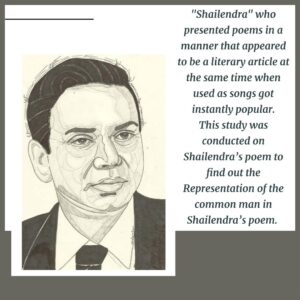 Directors like Satyajit Ray, Raj Kapoor, Guru Dutt, Bimal Roy, K. Asif, Mahboob Khan, Yash Chopra, and V. Shantaram created some musically rich films. Male stars like Ashok Kumar, Dilip Kumar, Raj Kapoor, and Dev Anand, and actress Nargis, Madhubala, Nimmi, Nutan are titled as first “stars” of Indian Cinema. They established a star system which is considered the backbone of Hindi Film Industry till today. It is also believed that if stars are the backbone of the Indian Film industry, then Music is its heartbeat (Rehman, 2016).
Directors like Satyajit Ray, Raj Kapoor, Guru Dutt, Bimal Roy, K. Asif, Mahboob Khan, Yash Chopra, and V. Shantaram created some musically rich films. Male stars like Ashok Kumar, Dilip Kumar, Raj Kapoor, and Dev Anand, and actress Nargis, Madhubala, Nimmi, Nutan are titled as first “stars” of Indian Cinema. They established a star system which is considered the backbone of Hindi Film Industry till today. It is also believed that if stars are the backbone of the Indian Film industry, then Music is its heartbeat (Rehman, 2016).
In the Hindi Film Industry songs have played an integral part in a movie script. Its role has been witnessed not only in musical Hindi movies but also has been used as a narrative tool in films of every genre that is from comedy to romance, thrillers to horror films. A character’s mood and progress of a sequence were depicted with songs more precisely than using dialogues and visual sequences (Vijayakar, 2013).
Shailendra began his writing career by writing for the Indian People’s Theatre Association (IPTA). An event hosted by IPTA had Raj Kapoor as a guest, where he heard for the first time Shailendra reciting his poem on the partition (Jalta Hai Punjab). Raj Kapoor identified his lyricist quality and approached to write songs for his directorial debut Aag. Shailendra then was working with Indian Railways, he instantly declined Raj Kapoor’s proposal. When Barsaat was under production Shailendra was expecting his first child, for financial stability he approached Raj Kapoor. Hence, Barsaat was Shailendra’s debut film as a lyricist in which he wrote two songs, “Barsaat Mein” and “Patli Kamar hai” both were great hits (Ahmar, 2016).
Shailendra witnessed struggle all his life. Poverty made him and his brother smoke beedis to suppress hunger. When he was young his father fell sick and his hardships became more intense. Soon he lost his only sister because he couldn’t afford her medical treatment. After losing his father and sister he lost his faith in God as well. His struggle and hardships made him gradually lean towards the leftist ideology; hence his writing majorly had concepts of social equality (Saxena, 2018).
Shailendra dynamically established himself as a lyricist of the common man. The simplicity in his writing, the depth of thoughts made his songs immortal. He wrote almost all types of lyrics. For instance, he wrote love songs like Pyar Hua Iqrar Hua hai, he wrote songs depicting the pain of parting, philosophy of life, different life aspects, and dreams of a common man. ‘Sajan Re Jhooth Mat Bolo, Khuda Key Pass Janna Hai, Na Haathi hai Na Ghoda Hai Wahan Paidal Hi Janaa Hai’- was sung by Mukesh for the film- ‘Teesri Kasam’ and composed by Shanker-Jaikishan and written by Shailendra clearly portrays the social reality. The simple and straightforward words when combined with melody gave meaning to soulful lyrics depicting feelings of a common man (Chopra).
Review of Literature: Elements of poetry:
Poetry is a form of literature where specific use of language is made to portray a feeling or build ideas. It comprises a strong unity between content and content used in different forms. Elements of poetry like rhythm and meter, sound, imagery, and form allow an individual to differentiate it from other types of text. A poem is written in four different forms to depict its meaning: sonic, typographical, sensory, and ideational. Sonic refers to elements that can be heard like rhythm and meter. The typography refers to physical features that can be determined by looking at the poem printed. Sensory refers to the language used in the construction of a poem to depict emotions. Ideational refers to the grammar used in the poem (Hamid R. Tizhoosh Farhang Sahba Rozita Dara, 2008).
Elements of Songs:
Songs largely depend on lyrics to convey emotion to their listeners. In a song when features like melody, tempo, rhythm, tune, and musical notes are used alone it gets difficult to distinguish and predict about emotions it is portraying. When combined with lyrics emotions can be classified easily because of the language used. There are 8 elements of a song: rhythm, dynamic, melody, harmony, tone color, texture form, and text. Rhythm refers to the tempo and meter of a song. Dynamic refers to the piano, crescendo. Melody deals with pitch and theme. Harmony refers to chord, tonality, and progression. Tone color refers to the instrumentation of a song. Texture refers to independent parts of a song. Form deals with the architectural structure of a song where its flow is decided. The text refers to the lyrics and language of a song (Minho Kim, 2011).
The language used in poetry and lyrics:
In literature, language is the tool of expression. It enhances the beauty of the text written. Through language, a poet describes a character, his/her behavior, and also the problems one comes across in life. The song is one of the literary works that use figurative language as its lyrics. An individual picks up a song to listen to which is relevant to his mood. The language of the song in that mood interest the listener and also, they can relate to life. In poetry, words are chosen to depict a theme wherein song musical themes revolve around lyrics (PARLIS, 2005)
The figurative language of lyrics mostly uses figures of speech such as imagery, symbol, alliteration, assonance, metaphor, simile, metonymy, and litotes to make their listeners visualize what the writer is trying to say. Literal language is mostly used in poetry to depict the direct meaning. Lyrics are written from the perspective of indirect comparison hence the figurative language is used. Figurative language is not the real meaning but it’s the connotative meaning. It forces the reader or listener to take the connotative meaning (VITRIA, 2013).
A lyric is set apart by brevity, melody, and emotional intensity. The brevity of the lyrics controls the intensity of emotional expression wherein music helps the lyrics in becoming memorable.
Research Design: Statement of Purpose: The purpose of this study is to understand the correlation between the lyrics of the Shailendra and the life of the common man.
Aim: To establish the representation of the common man in Shailendra’s lyrics.
Objective: To analyze the content and language of songs written by Shailendra to establish their relationship with the common man.
Research question:
RQ 1. What kind of words are used by Shailendra in his lyrics?
RQ 2. What is the subject of songs written by Shailendra?
RQ 3. What does the content of the songs written by Shailendra specify?
Hypothesis: Shailendra used simple everyday spoken Hindi language for his lyrics and he mostly wrote about the daily life of the common man.
Research Methodology: The methodology is qualitative research. The method used to conduct research is content analysis.
Tools of Data Collection: The researcher performed a content analysis on 5 landmark songs penned by Shailendra. The songs were thoroughly analyzed for their content and language and correlate with the life and understanding of the common man.
Data Analysis: Following is a thorough analysis of the 5 chosen lyrics representative of the Shailendra lyrics, it was clearly evident that Shailendra’s lyrics had 2 major impacts
- The overall theme of the songs reflected the daily life and struggles of the common man in the post-independence era.
- His choice of words was from the common man’s spoken Hindi i.e., simple and direct words making it easier for the masses to understand unlike the use of conventional poet’s Urdu which was the trend at the time.
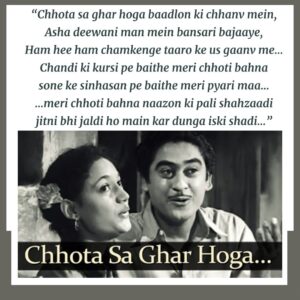
Analysis of Songs:
Shailendra’s lyrics depicted the daily life of the common man who struggles very hard in search of his basic necessities like shelter, food, and a sense of belonging and acceptance in society. These lines from ‘Awaara hoon’ clearly depict that… “Gharbaar nahin, sansaar nahin, Mujhse kisi ko pyaar nahin, Us paar kisi se milne ka iqraar nahin, Mujhse kisi ko pyaar nahin…”. His songs mirrored the innocent little dreams of the common man as in these lines of the song “Chhota sa ghar hoga baadlon ki chhanv mein…, Its shows the desire of the common man to be the hero of his family by being a good son, good brother, and good husband, and so on…How much even small, poor, and ordinary a common is, he always dreams of doing great things for the family so that he feels accomplished and respected.
As much as one tries failures are a part of the daily life struggles and the common man most often learns it the hard way. Hence there were masterpiece lyrics by Shailendra which echoed the pain of that common man who lost everything and starts to believe he cannot do anything. Just as these lines from the song “Sab Kuch Seekha Humne Na Seekhi Hoshiyaari…”.
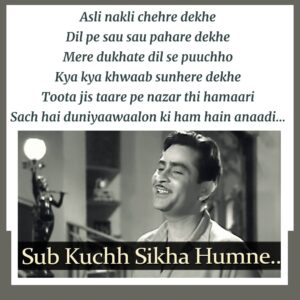
However, this is that very common man who despite failures and downfalls remains hopeful of a better tomorrow keeping his expectations from life and world alive. The song “Aaj Kal Mein Dhal Gaya…” showed the optimistic side of the common man. “…Hai bujhaa-bujhaa saa dil, bojh saans-saans pe, jii rahe hain phir bhii ham, sirf kal kii aas pe…”
His song retained the hopes of the common man and his willpower to never give up and stay positive and motivated as in the song Mera Joota Hai Japani…, “…upar niche niche upar, lahar chale jeevan ki, naadaan hain jo baith kinaare, puchhe raah vatan ki, chalna jeevan ki kahaani, rukana maut ki nishaani…, the above analysis establishes the fact that the common man was central in the lyrics of Shailendra
Conclusion: The common man’s language:
The simplicity in the language used by Shailendra was instrumental in the popularity of the songs penned by him. Although the sophisticated poetic Urdu was the trend at the time, most of the common population in that period wasn’t educated enough nor had any of the modern-day translation tools or media options. Hence amidst the popularity of other legendary lyricists of his era, Shailendra created a niche for himself by using everyday spoken language in his lyrics thus making them appealing and relatable to the common man.
Instead of writing the lyrics in the form of poetry, he wrote them more like a conversation between two people thus adding mass appeal. Descriptions of dreams and hardships, everyday struggles were denoted directly by using literal language. Lyrics are to be written with figurative language but Shailendra broke the myth by making the language usage situational. His language usage depicted the emotions hence at times he used literal language and at times he used figurative language. Both the language and the theme of the songs were designed to appeal masses and thus in line with our hypothesis.
Bibliography:
Hamid R. Tizhoosh Farhang Sahba Rozita Dara. (2008). Poetic Features for Poem
Recognition: JOURNAL OF PATTERN RECOGNITION RESEARCH, 16.
Minho Kim, H.-C. K. (2011). Lyrics-based Emotion Classification using Feature Selection by Partial Syntactic Analysis. IEEE International Conference on Tools with Artificial Intelligence, (p. 964). Busan.
PARLIS, D. (2005). FIGURATIVE LANGUAGE ON THE SONGS OF “MICHAEL LEARNS TO.
Rehman, S. N. (2016). Role of Music in Hindi Cinema. Synergy Volume 12.
Saxena, P. (2018, September 02). Shailendra: poet of the masses, not given his due in Hindi literature. Retrieved from www.nationalheraldindia.com: https://www.nationalheraldindia.com/entertainment/shailendra-poet-of-the-masses-not-given-his-due-in-hindi-literature
Vijayakar, R. (2013). The role of a song in a Hindi film. CELEBRATING A CENTURY OF INDIAN CINEMA: PASSIONS, PLEASURES & PERCEPTIONS.
VITRIA, E. (2013). THE ANALYSIS OF LANGUAGE STYLE IN THE SONGS LYRICS.


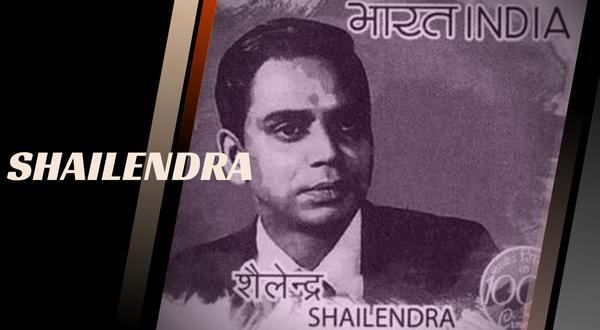
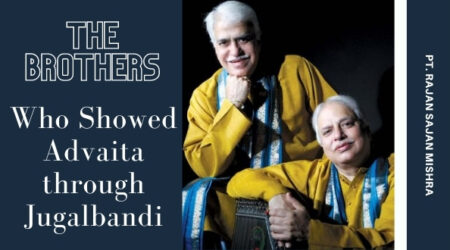
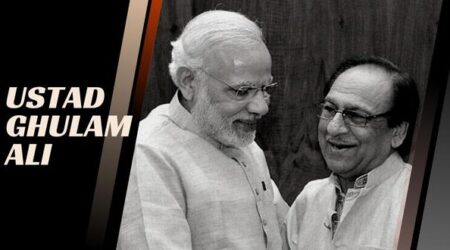
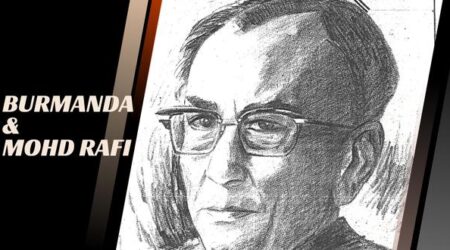
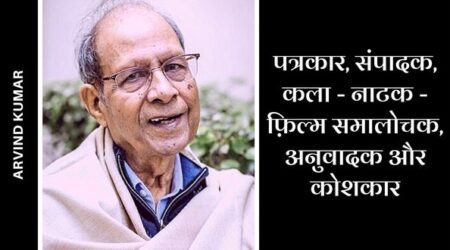
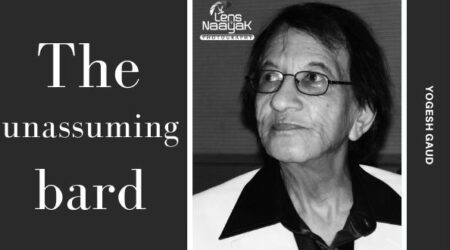
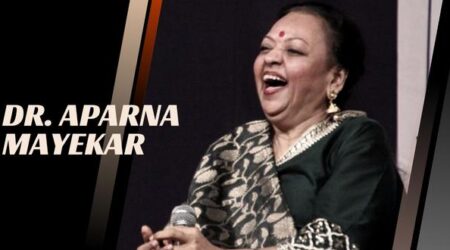
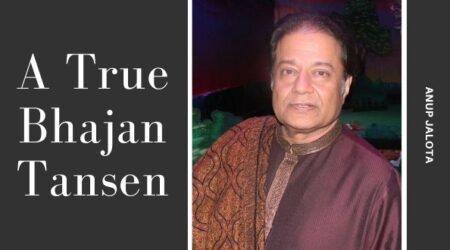
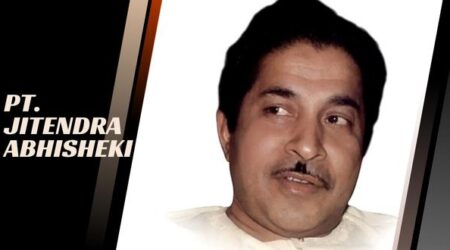
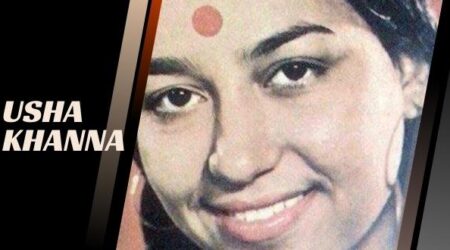
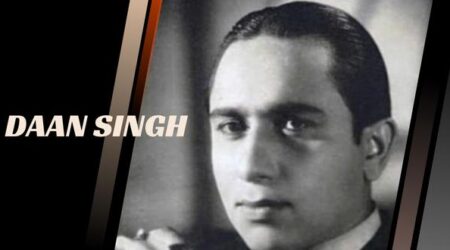

Comments (5)
Very best analysis, great share
Beautifully written. Extremely insightful.
Very interesting n informative article on the legendary lyricist Shailendraji.
Well done Swar Aalaap/ Rubinaajee.
Well written. Music / lyrics of that era was the jewel in the crown for Hindi movies. Songs were situational, entertaining, profound etc and helped shape the movie. Today it’s just trashy decoration and it’s not just me, I’ve heard stars admitting this!
Thnx for a brilliant description of Shailendra.